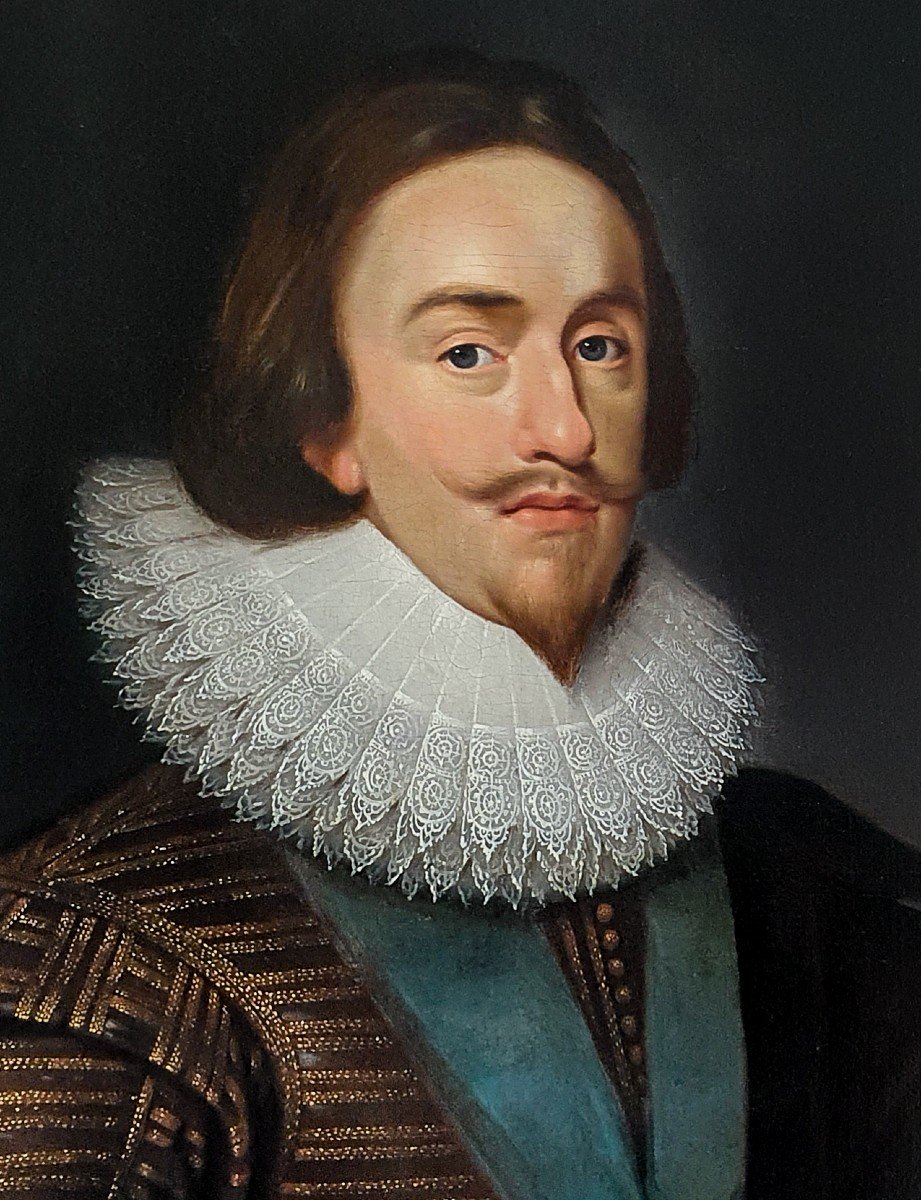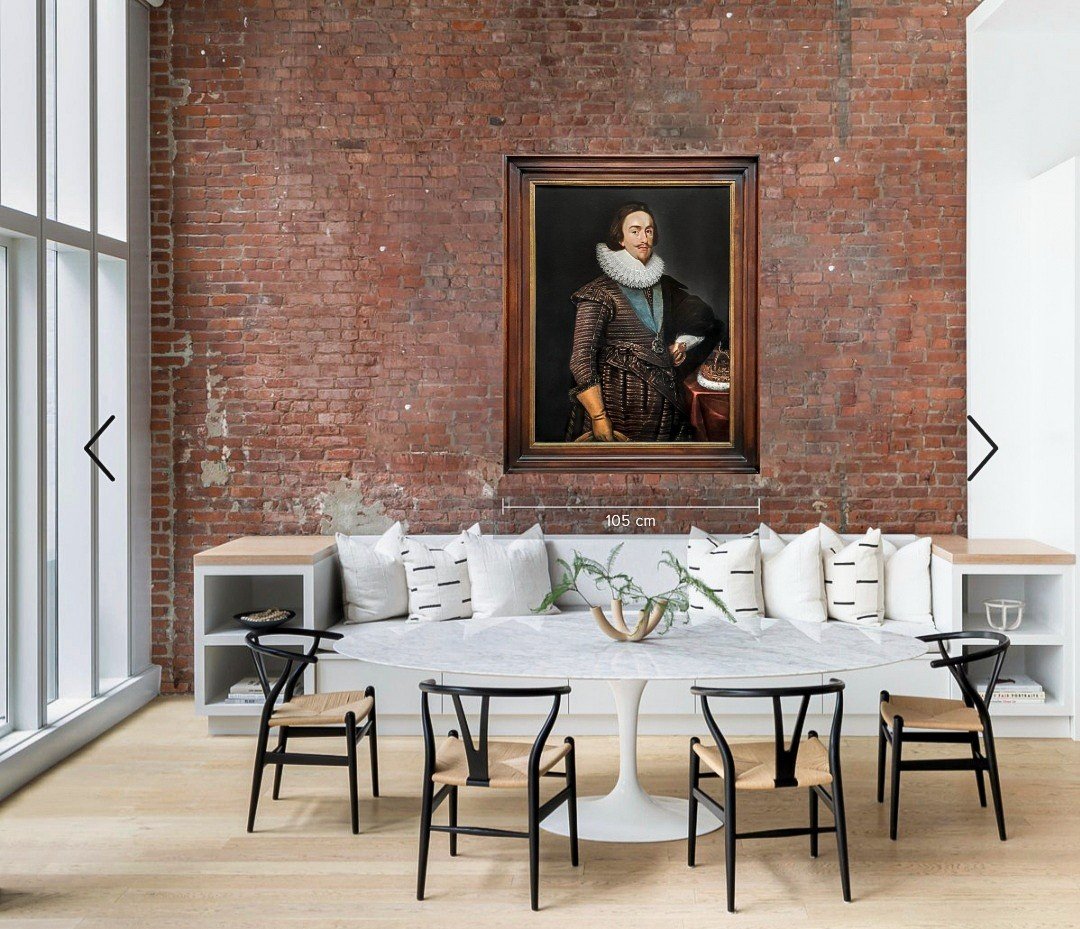"Portrait Of King Charles I With Royal Crown C.1633; Studio Of Daniel Mytens (c.1590-1647/48)"
The artist of this portrait was one of the most distinguished Anglo-Dutch court artists of the time and court painter to King Charles I - Daniel Mytens. Even though Mytens’ output of full-length portraits of Charles I and his courtiers was prolific, what is unique to our portrait and is of particular importance, is the presence of what must be a representation of the Scottish royal crown - all other portraits of Charles I that depict him with a crown show him beside the Tudor Crown. Although Charles succeeded his father in 1625, his long-delayed and long-awaited Scottish coronation did not take place until he finally returned to his native Scotland in the early summer of 1633, the first such royal pageant in Edinburgh since 1590. Our portrait is thought to have been commissioned to mark this event, painted between the king's accession to the throne in 1625 and Mytens' departure from England in 1634.Charles I was the second surviving son of James I. He married Henrietta Maria (1609–1669), sister of the French king Louis XIII, in 1625. His reign was marked by increasing hostility between himself and Parliament. He retained the intensely unpopular Duke of Buckingham as his chief minister and dissolved Parliament in 1626, 1628 and 1629. He then ruled for 11 years without a Parliament, before summoning two in 1640 when urgently in need of funds. It was his relationship with the second of these, the Long Parliament, which led to the English Civil War and to his own eventual capture in 1647. In 1649 he was tried in Westminster Hall, charged with high treason and beheaded on a scaffold erected in Whitehall. He was succeeded by his son Charles II.
This magnificent portrait depicts Charles wearing a doublet of brownish coloured silk with a sharply pointed V-shaped waistline. Below the waist at the front are six stiffened laps decorated with gold thread. Tightly spaced buttons stretch from neck to waist ensuring the doublet retains its tight fit across the torso. Around the waistline are ribbon bows tipped with metal aglets. By this stage they are probably purely ornamental, a vestigial feature reflecting the earlier fashion for doublet and breeches to be laced together through holes in the waistband. The riband and badge (the Great George) of the Order of the Garter hang down his chest. Although the regalia never lets us forget that we are in the presence of royalty, the costume is that of a fashionable (but not overly so) courtier. Cordovan leather is used for his gloves.
The artist’s Dutch origins are evident in his sensitivity to texture and surface. The overall image is one of luxury and superb rendering of paint, noteworthy in the textiles but also the fine and painstaking depiction of the white lace ruff. Such characteristics are combined with the Elizabethan and Jacobean tradition of formal full-length court portraiture. The present work is clearly consistent in execution with autograph works of the period.
The composition can be related to a number of portraits of King Charles I by Mytens. The head in the present work can be compared to the Mytens in the Royal Collection which is signed and dated 1628. The composition which shows the Great George suspended from the Garter sash is known through engravings. Mytens produced many carefully controlled images of the King; these portraits were not retained by the King himself however but despatched to friends, servants and officials overseas. From 1620 to 1634 there are regular payments to Mytens for official royal portraits.
The regalia known as the Honours of Scotland, which include the Crown along with the Sceptre and Sword of State, unlike their English equivalent of the time, still exist. Following the Act of Union of 1707, which unified the Kingdom of Scotland and the Kingdom of England to form the Kingdom of Great Britain, and having no ceremonial role to play in the proceedings of the new Parliament of Great Britain in London, the Honours were locked away in Edinburgh Castle. There they remained all but forgotten in a chest until 1818, when a group of people including Sir Walter Scott set out to find them to great public acclaim.
Daniel Mytens (c. 1590-1647/48) was born in Delft into a family of artists. He worked in Delft up to 1602 and then in The Hague between 1602 and 1617 where he was also a member of the guild of Saint Luke's in 1610. He was the nephew of the painter Aert Mijtens and the father of the painter Daniel Mijtens the Younger. He may have been a pupil of either Michiel van Miereveld or Jan Anthonisz van Ravesteyn, or both. By 1618 he was in London, painting the great connoisseurs the Earl and Countess of Arundel. He painted James I in 1621 and was awarded an annual pension by the King in 1624. Soon after his accession in 1625, Charles I appointed Mytens ‘one of our picture-drawers of our Chamber in ordinairie’ for life. He was so prolific in producing full-length portraits of Charles I and his courtiers, including duplicates of current works and older portraits (of royal sitters, including; James IV of Scotland, his wife Margaret Tudor, and Mary, Queen of Scots) that it is assumed that he had workshop assistance, including from Cornelius Johnson (amongst others) around 1630.
Mytens introduced a new naturalism into the English court portrait, but after the arrival in England of the far more distinguished Anthony van Dyck in 1632 he was eventually overshadowed and he returned to The Hague in 1634. There, he worked primarily as an art dealer until 1647 acquiring works for the Earl of Arundel among others. Only four paintings survive from this final period. He died in The Hague. Some of Mytens’ works are still owned by the Royal Family and others are in great museums around the world.
This portrait is an excellent example of royal court portraiture by the leading artist at the time. It is of Scottish interest with the very rare depiction of the Scottish crown.
Measurements: Height 131cm, Width 105cm, Depth 8cm framed (Height 51.5”, Width 41.25”, Depth 3.25“ framed)



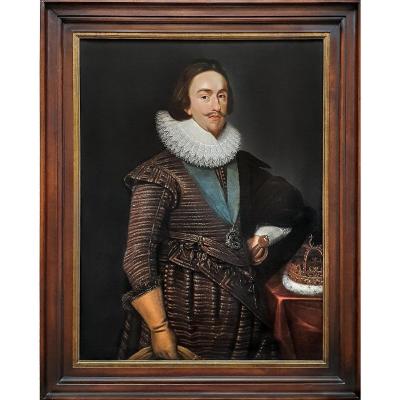





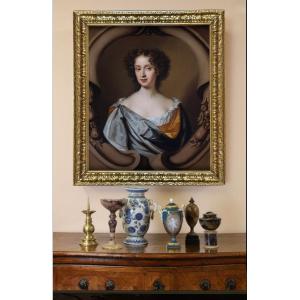
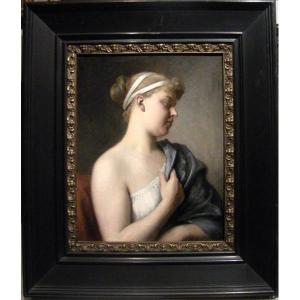



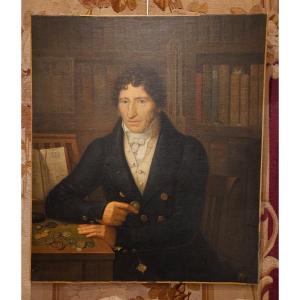
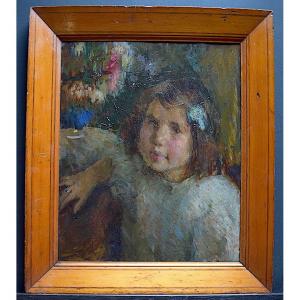




 Le Magazine
Le Magazine Rivista Artiquariato
Rivista Artiquariato TRÉSORS magazine
TRÉSORS magazine





